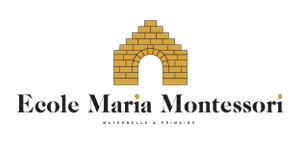

Our bilingual nursery and primary school is a friendly establishment built on a human scale. Close to local amenities, it has a large car park and is situated in a residential district in the heart of Strassen. Strassen is close to the capital and attracts a large number of foreign residents. 59 % of its inhabitants are not Luxembourgers and represent a hundred different nationalities. Strassen is a dynamic town that offers a high quality of level, with excellent infrastructures and green environment. It is also well served by public transport, giving workers easy access to districts such as the Kirchberg, Cloche d’Or and Luxembourg-City centre.
Our bilingual nursery and primary school is housed in a large character house surrounded by 2300 m² of wooded grounds. It welcomes pupils aged 3 to 12 and seeks to provide an educational response to the development of your child’s autonomy and socialisation. The school is made up of 4 classes with an average of 25 pupils per class, a restaurant, a gym, a music room and a pupils’ kitchen. In addition, for reasons of comfort and safety, there is a Childcare Centre on the same site as the school. The pupils are therefore on site and supervised by the teachers with whom they are used to working in class for all the activities that they decide to take on.
Maria Montessori, an Italian doctor and teacher from the start of the 20th century, devised an open and experimental teaching method based on the observation of children. Regarding children as individuals in their own right and as the future of society, she developed concepts such as the absorbent mind, sensitive periods or the polarity of discipline and freedom. Pupils are free to choose the content, duration and frequency of what work they do but they must be able to slot into the school microcosm. By the same token, they do not need adults to correct their work, which means that teachers adopt a non-intrusive role as observers. They therefore learn by themselves in response to their natural curiosity, within sensitive periods and development phases during which they are particularly receptive to a particular field and find it easy to learn. Maria Montessori also developed the idea of putting children of different ages into one group. That is why our classes see a mixture of pupils between the ages of three and six on a daily basis. The youngest therefore learn through contact with their older classmates, who feel a sense of commitment as regards transmitting their qualities and being responsible.
The autonomy and social interaction of children are the two main goals of the Montessori teaching methods; these are very important points which are emphasised by our school at all times. It is therefore important for us that the children integrate into the world they live in and find their way.